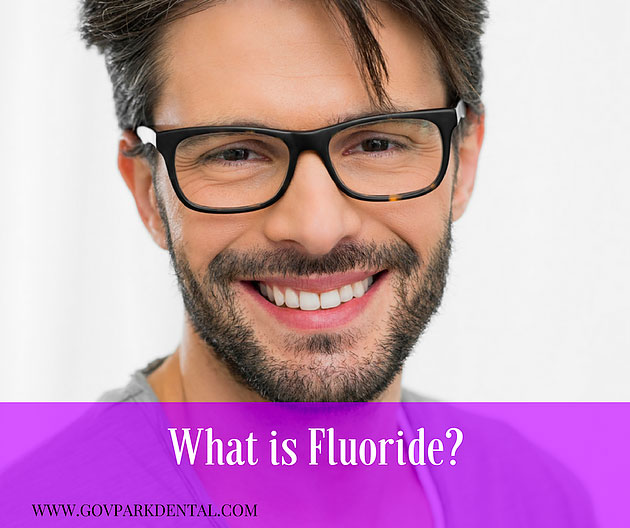Tooth enamel is a pretty dynamic substance. Every day, the crystals that bond together to form it can lose (demineralize) or gain back (remineralize) the minerals within them. Consistent demineralization without subsequent remineralization leads to enamel loss, which contributes to tooth decay and sensitivity.
Our teeth have plaque, and bacteria feed upon the plaque—leaving behind acidic substances that contribute to demineralization and enamel loss. However, the process of remineralization is there to balance it all out. The Colgate Oral Care Center states “minerals in the saliva, such as fluoride, calcium and phosphate, are deposited back into the enamel.” Fluoride is an especially important substance in the process, as it is responsible for keeping our teeth strong and repairing damage from demineralization cycles. But what is it?
Fluoride is a naturally-occurring mineral. In fact, it’s found in every water source—from rivers and creeks to ponds and oceans. It can be absorbed into the surface of your teeth when swallowed or into your bloodstream when ingested. Either way, it goes to work strengthening and fortifying the surface of your tooth enamel. Because of this, it’s critical to proper oral health. Without it, teeth would not be remineralized between cycles of demineralization, enamel would deteriorate, and decay would set in.
Fluoride that enters the bloodstream is only absorbed into the teeth up to age 16, while teeth are still developing. It’s important that adults (and children over age 6) use a fluoridated toothpaste to keep fluoride levels high enough to remineralize teeth. In cases where a child does not drink fluoridated water, or is at high risk for decay, fluoride supplements may be required. It’s important to consult with your dentist to ensure that levels are appropriate, and not harmful, if this is the case.
To learn more, visit https://www.govparkdental.com/
Dr. Terry Brewick serves patients in the Governor’s Park neighborhood of Denver, Colorado.




